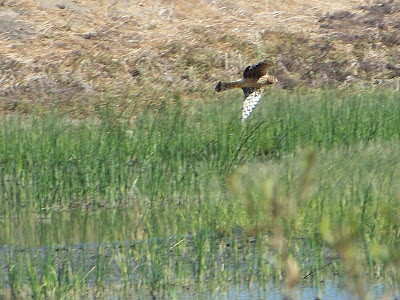
I like to hit several birding places in one outing. So today I went to Upper Newport Bay Ecological Reserve aka Newport Back Bay, and it was somewhat quiet.
 Black Skimmers. Some lighter juveniles in the mix.
Black Skimmers. Some lighter juveniles in the mix.All over Orange County I am seeing mulefat going to seed. It catches the sunlight and looks pretty. So I took a picture. Provides lots of food for the birds in fall and winter.
 Mulefat
MulefatI am thinking this is mulefat. Isn't it pretty?

A closer look at the mulefat.
It attracts lots of White-crowned Sparrows, House Finches , Lesser Goldfinches and lots of Bushtits, and other seed eaters.

 And the American Wigeons back from their breeding grounds. I often see them near the drainage pipe from the surrounding neighborhood.
And the American Wigeons back from their breeding grounds. I often see them near the drainage pipe from the surrounding neighborhood. Black-necked Stilt with its black-and white feathers and red legs mirrored in the water.
Black-necked Stilt with its black-and white feathers and red legs mirrored in the water.I had to park in the auxiliary parking lot which provided a closer view of the first pond. It was full of shore birds and ducks.
 American Avocet in winter plumage foraging.
American Avocet in winter plumage foraging.Lots of shorebird action.
 Dowitchers. Long-billed? Short-billed? Guesses?
Dowitchers. Long-billed? Short-billed? Guesses? Pair of Killdeer--Charadrius vociferus scurrying about being vociferous.
Pair of Killdeer--Charadrius vociferus scurrying about being vociferous. Northern Shovelers shoveling.
Northern Shovelers shoveling. Female Northern Harrier scattered the shorebirds.
Female Northern Harrier scattered the shorebirds.

Common sight. American White Pelicans coming into San Joaquin Wildlife Sanctuary for a rest.
Overhead a flock of American White Pelicans flew looking for a resting place deep in the marsh. I see them often on the islands or strands of mud in one of the ponds back in the marsh. Often see Black Skimmers there as well, but not today.
 Osprey up in the Eucalyptus between the Audubon House and the trail by the pond. Notice the fish under his left foot. Look at that bill!
Osprey up in the Eucalyptus between the Audubon House and the trail by the pond. Notice the fish under his left foot. Look at that bill!I met a birder and photographer in the parking lot that I seem to see everywhere in the Southland. Dave. Sunburned and peering through his telephoto lens. He pointed out an Osprey in the tree by the Audubon House. Many thanks to Dave.
 He stayed up there eating for hours.
He stayed up there eating for hours.












 And lots of
And lots of 















